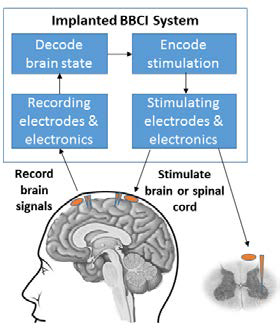 In the next decade, people who have suffered a spinal cord injury or stroke could have their mobility improved or even restored through a radically new technology: implantable devices that can send signals between regions of the brain or nervous system that have been disconnected due to injury.
In the next decade, people who have suffered a spinal cord injury or stroke could have their mobility improved or even restored through a radically new technology: implantable devices that can send signals between regions of the brain or nervous system that have been disconnected due to injury.
That’s the mission driving the Center for Sensorimotor Neural Engineering, a University of Washington-led effort that includes researchers from the Massachusetts Institute of Technology, San Diego State University and other partners.
To support development of this much-needed technology, the National Science Foundation recently renewed the center’s funding. It has awarded $16 million over the next four years to support research on implantable devices that promote brain plasticity and reanimate paralyzed limbs.
“There’s a huge unmet need, especially with an aging population of baby boomers, for developing the next generation of medical devices for helping people with progressive or traumatic neurological conditions such as stroke and spinal cord injury,” said CSNE director and UW professor of computer science and engineering Rajesh Rao.
The goal is to achieve proof-of-concept demonstrations in humans within the next five years, Rao said. This will lay the groundwork for eventual clinical devices approved by the Food and Drug Administration, in collaboration with the center’s industry partners.
CSNE was founded in 2011 with an $18.5 million NSF grant. Since then, its interdisciplinary team of neuroscientists, engineers, computer scientists, neurosurgeons, ethicists andindustry partners has led the way in developing “bi-directional” implantable devices that can both pick up brain signals and send information to other parts of the nervous system.
The devices record and decode electrical signals generated by the brain when a person forms an intention, for example, to move a hand to pick up a cup. The devices are also able to wirelessly transmit that information, essentially creating a new artificial pathway around damaged areas of the brain or nervous system.
Read More – Source: UW center receives $16M to work on first implantable device to reanimate paralyzed limbs | UW Today
